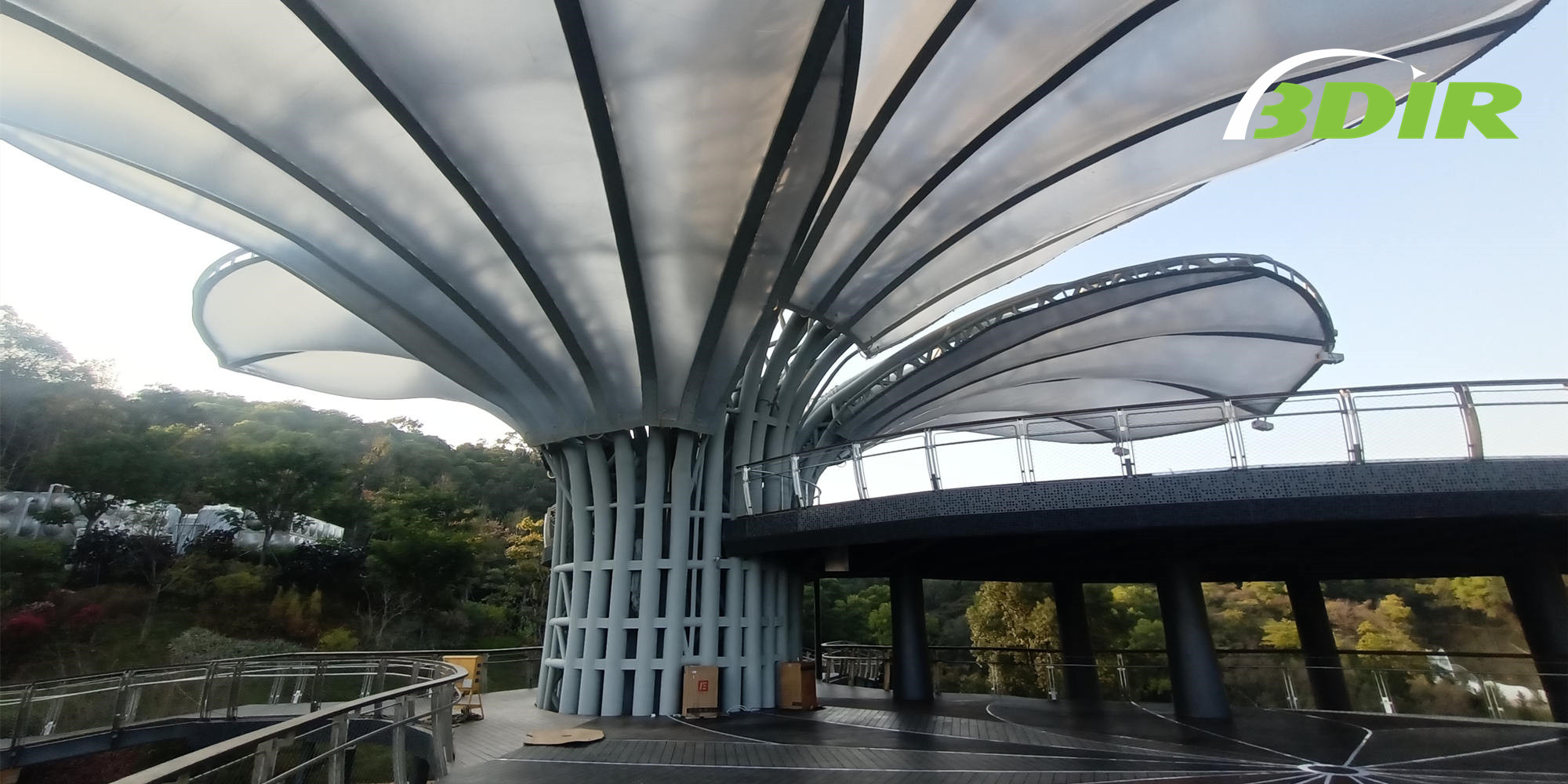ETFE In today’s design world has risen to prominence as one of the most intriguing materials. ETFE is the preferred material for façade technology due to its resistance to strong environmental influences and high sustainability rating. Modern façade technology requires the use of glass and ETFE membranes. In a well-designed building, the combination of ETFE membranes and basic lighting can result in breathtaking architectural wonders. Whether it is a foil cushion or a single layer that is mechanically pre-tensioned, the most audacious architectural projects may always be realized with the use of an etfe facade.
As you read this manual, you will become familiar with a variety of ETFE designs.
Insulation
Ethylene tetrafluoroethylene (ETFE) has a U value of roughly 5.6 w/m2K and is employed largely as an external barrier; nonetheless, it can offer enough insulation and is often utilized in mainstream space design.
Additional foil layers can improve the thermal properties of ETFE cushions.
Transmittance of Illumination
Due to ETFE foil’s inherent translucency, light of all wavelengths may be transmitted through it (380-780nm). A single layer of medium-weight ETFE transmits light at approximately 90% to 95%, with just a minor drop as extra layers are applied.
Solar Heat Gain
Because of their inherent transparency, ETFE roofs can aid in passive solar uptake in the area underneath them when designed as a multi-layered cushion.
Fritting
ETFE foil may be printed with a silver pattern to reflect light and reduce solar gain using a specialized printing technology while yet maintaining its gorgeous translucency. Adjust the amount of light and energy communicated by altering the amount of ink coverage and density.
Inflation
ETFE cushion systems benefit from pneumatic pressure since it gives structural stability and weather resistance (around 250-300pa). There are unique air pipes that connect the air handling equipment to each ETFE cushion system.
Loss of Influence
Due to the non-return valves integrated into the air inflation units, the ETFE cushion system can maintain pressure for up to six hours (depending on weather conditions) in the case of a power outage.
Replacing and Repairing Damaged Items
ETFE foil is renowned for its superior tear resistance, lack of notch weakness, and absence of stress fracture concentrations. Despite initial tears, the material immediately expands and bends out into a robust, low-radius area that absorbs stresses and prevents subsequent ripping.
You may quickly and simply repair a minor puncture hole in the foil with this method.
Maintenance:
Unlike traditional fabric frameworks, ETFE Foil has a flat surface due to the extrusion process. As a result, rainwater quickly cleans the ETFE foil surface of the majority of bird excrement and other waste. As a result, ETFE foil roofs require less frequent cleaning, roughly every two to three years is a good rule of thumb.
Bottom Line:
Finally, plastic polymers are being recognized as acceptable building materials, and ETFE has been successfully used in a number of architectural projects. Following that, it is up to the architects to develop novel methods to incorporate the material into their designs.

